
Structural Design & Analysis
Effective structural design begins with the utilization of sophisticated software tools. Our engineers employ cutting-edge software to craft precise three-dimensional models of structures. These digital representations are instrumental in simulating and analyzing a structure’s behavior under various conditions. These detailed models ensure that the structure is optimized for design efficiency and performance predictability. Our team is capable of performing the following specialized designs and analysis
Wind Analysis
Wind analysis is crucial for designing structures that can withstand the effects of wind loads, which can vary in intensity and direction. By understanding the aerodynamic behavior of a structure, engineers can optimize its design to ensure stability, safety, and functionality, especially in regions prone to high winds or extreme weather events. Incorporating wind analysis into the structural design process helps mitigate the risks associated with wind-induced forces and enhances the overall resilience of the built environment.
- Static Wind Analysis: Assesses the response of a structure to steady-state wind loads, considering factors such as wind speed, direction, and atmospheric conditions.
- Dynamic Wind Analysis: Simulates the dynamic effects of fluctuating wind loads on a structure, accounting for vortex shedding, gusts, and other time-dependent phenomena.
- Wind-Induced Vibration Analysis: Evaluates the potential for wind-induced vibrations, ensuring that structures remain within acceptable limits to prevent discomfort or damage.
- Wind Load Distribution Analysis: Determines how wind loads are distributed across the various components of a structure, aiding in the design of appropriate structural elements.
- Code-Based Wind Analysis: Adheres to specific building codes and standards that prescribe methodologies for calculating wind loads on structures.

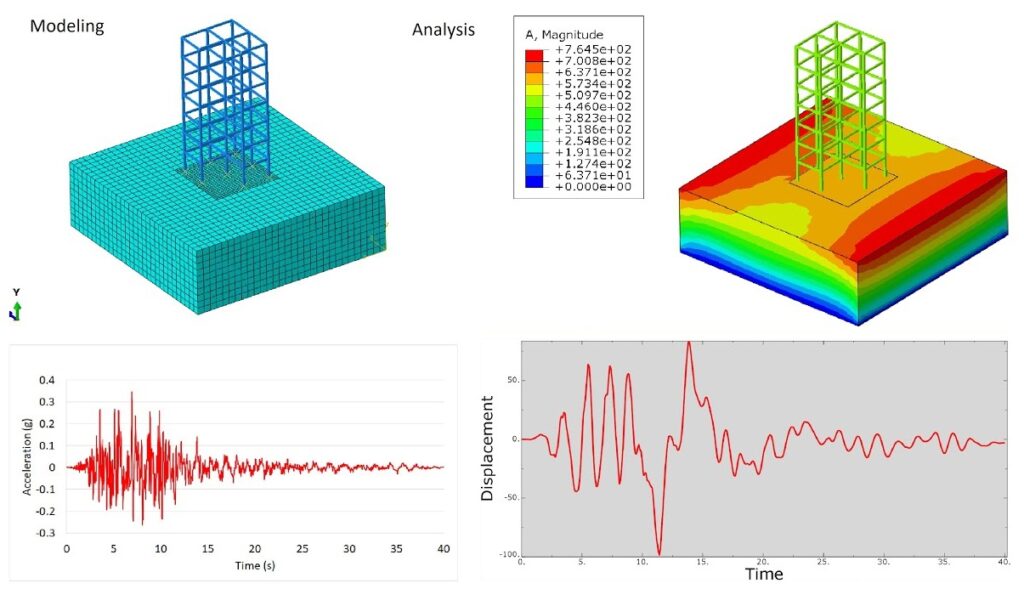
Seismic Analysis
Seismic analysis is particularly critical in regions prone to earthquakes. By comprehensively studying a structure’s behavior under seismic loads, engineers can implement design measures to enhance its earthquake resistance and protect human life and property during seismic events. This type of analysis considers the dynamic and complex nature of earthquake forces, allowing for the development of structures that can withstand and mitigate seismic effects.
- Linear Static Seismic Analysis: Assesses the response of a structure to seismic forces while assuming linear material and geometric behavior.
- Nonlinear Static Seismic Analysis (Pushover Analysis): Considers nonlinear behavior, such as yielding, to evaluate a structure’s seismic performance.
- Dynamic Seismic Analysis: Utilizes time history or response spectrum analysis to simulate the dynamic response of a structure to earthquake ground motion.
- Seismic Performance Assessment: Evaluates the overall seismic performance of a structure, considering factors like ductility, capacity, and resilience.
- Soil-Structure Interaction Analysis: Examines how the interaction between the structure and the supporting soil affects seismic response.
Static & Dynamic Analysis
- Linear Static Analysis: Assumes linear material behavior and analyzes structures under static loading conditions.
- Nonlinear Static Analysis: Considers nonlinear material or geometric behavior under static loading.
- Modal Analysis: Determines the natural frequencies and mode shapes of a structure.
- Response Spectrum Analysis: Evaluates the structure’s response to dynamic loads based on a response spectrum.
- Time History Analysis: Simulates the time-varying behavior of a structure subjected to dynamic loads over time.
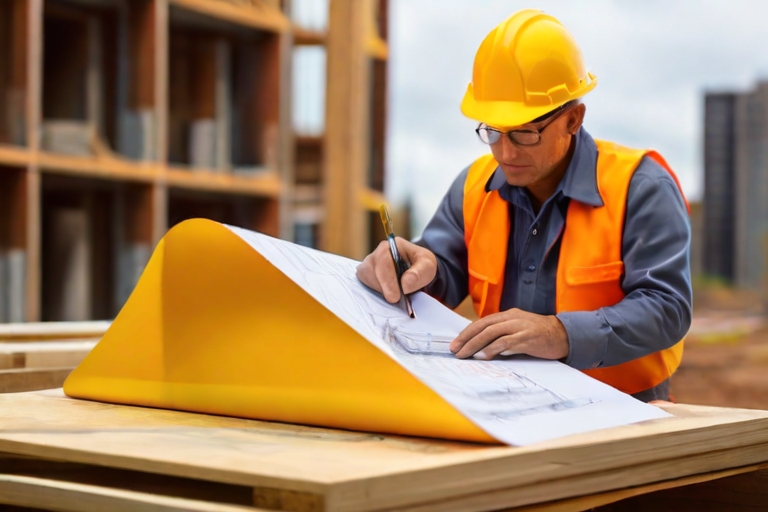
Site Specific Response Spectrum Analysis
The commonly employed two-period response spectrum exhibits a limited plateau, rendering it unsuitable for high-rise structures characterized by long periods. While the ASCE 7/16 response spectrum is effective for short periods (i.e., less than one second), for structures with longer periods we prepare a site-specific spectrum derived from a probabilistic hazard analysis.
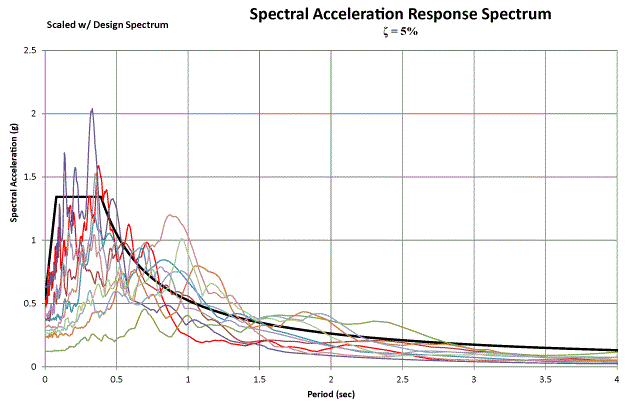
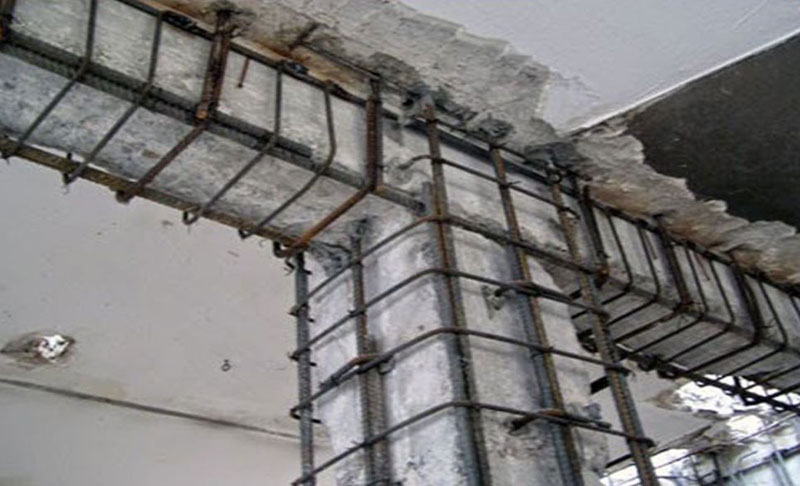
Structural Assessment and Retrofitting Design
We have developed expertise in Structural Rehabilitation and Strengthening of Buildings. State of the art techniques like structural strengthening with carbon fibre wrapping, foundation rehabilitation with micro piles etc. are being used on projects
- Surveys: Damage Surveying, Core Sampling, Steel Extraction, Ferro Scanning, Slab Load Tests, Petrographic Testing, etc.
- Development and Implementation of non-destructive testing (NDT) regimes
- Structural Assessment and Evaluation of Test Data: Structural Integrity, Thermal Stress Analysis, Fatigue Life Analysis, Concrete / Reinforcement Assessment, etc.
- Development of repair methods and structural strengthening schemes (CFRP wrapping or lining, Column Jacketing, Grouting and Injection, Steel Bracing, Steel Plate Bonding, Foundation Underpinning, etc.)
- Monitoring of structural condition
Vibration Analysis
Utilizing software like SAP 2000, a three-dimensional model is developed. Modal analysis is then applied to ascertain the system’s natural periods, frequencies, and modal shapes. To gain insights into the dynamic behavior and response, a dynamic time history analysis is carried out. Damping values, aligning with guidelines from relevant codes and standards and encompassing both geometric and material damping, are adhered to. This systematic approach is geared towards safeguarding stability and reliability in the dynamic response of the scrutinized system.
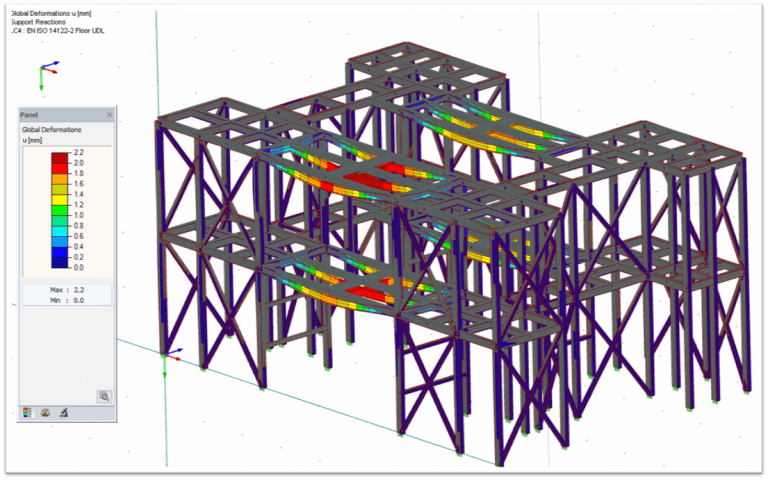
Code Compliance
We prioritize adherence to applicable building codes, standards, and regulations to ensure the structural design aligns with safety, durability, and legal requirements. Our team is well versed in the following codes and standards:
- ACI – American Concrete Institute
- AISC – American Institute of Steel Construction
- ASTM – American Society for Testing and Materials
- ASCE – American Society of Civil Engineers
- EURO Codes – Technical rules developed by the European Committee for Standardisation for the structural design of construction works in the European Union
- BSI – British Standards Institute
- FHWA – Federal Highway Administration
- AASHTO – American Association of State Highway and Transportation Officials
- CIRIA – Construction Industry Research and Information Association

Software
The integration of state-of-the-art technology into our processes underscores our dedication to delivering optimal solutions for our clients. By staying ahead of the curve in terms of software capabilities, we position ourselves to tackle a diverse range of engineering challenges with confidence and innovation. At NDA Consulting, we believe that investing in the latest tools is an investment in the success and longevity of every project we undertake. Our staff are professionally trained in the following software programs and stay up-to-date with the latest versions:
- ETABS for multi-story building analysis and design
- SAFE for foundation and elevated-slab
- SAP2000 for structural analysis and design
- Pro – STructural Analysis and Design
- CSiBridge for specialized bridge-engineering
- PLAXIS 3D – Finite Element Analysis including Deformation, Stability and Water flow Analysis as well as Soil-Structure Interaction
- Elastic Plate (ELPLA) is a powerful tool for analyzing raft/ piled-raft foundations
- GEO 5 – comprehensive software suite providing solutions from geological survey to advanced geotechnical design
- Deep Excavations (DeepEx) for linear, non-linear (elastoplastic), limit equilibrium analysis and optimization for Deep Excavations
- SNAIL – Soil Nail Wall Analysis and Design Software
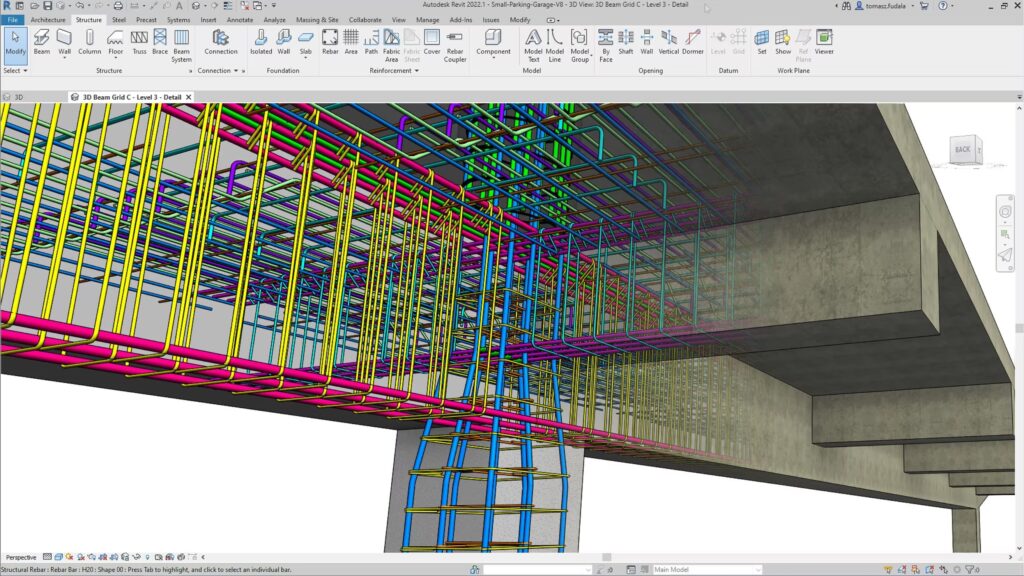
Value Engineering
In our pursuit of cost-effective design without compromising structural integrity, our engineers conduct meticulous design calculations. They assess loads, material properties, and other parameters to determine the dimensions and specifications of structural elements, striking the optimal balance between cost and performance. Exploring alternative materials, construction methods, and design approaches is integral to achieving this balance.

Substructure Design including Shoring Works:
Designing the substructure, encompassing the foundation and supporting elements of a structure, is a meticulous process. This process includes design of Shallow Foundations, such as Strip Footings, Isolated Footings, Combined Footings, and Raft Foundations etc. or Deep Foundations like Pile Foundations, Piled Raft Foundations, and Caisson Foundations, as well as designing retaining walls. Safety during construction is a paramount consideration, and thus, temporary supports known as shoring works are thoughtfully incorporated into the comprehensive design. Our designs encompass a variety of shoring piles, including Sheet Piles, Soldier Piles, Secant Piles, and Micropiles. Additionally, we utilize tie-back mechanisms such as post-tensioned grout anchoring and steel strutting and rakers to enhance stability and support during the construction process.
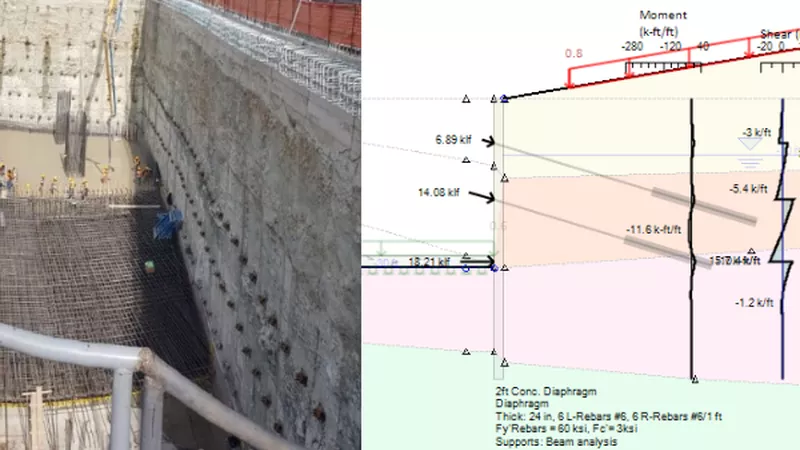
Structural Detailing
Our team adheres meticulously to structural detailing codes and standards while crafting precise drawings and specifications for construction teams. This process ensures strict compliance with dimensional accuracy, material specifications, and detailing connections, aligning with industry standards. In the context of reinforced concrete structures, our detailing includes adherence to relevant codes for reinforcement configurations. By consistently referencing and upholding established codes and standards, our structural detailing not only meets regulatory requirements but also guarantees the structural integrity and safety of the construction in accordance with industry best practices.
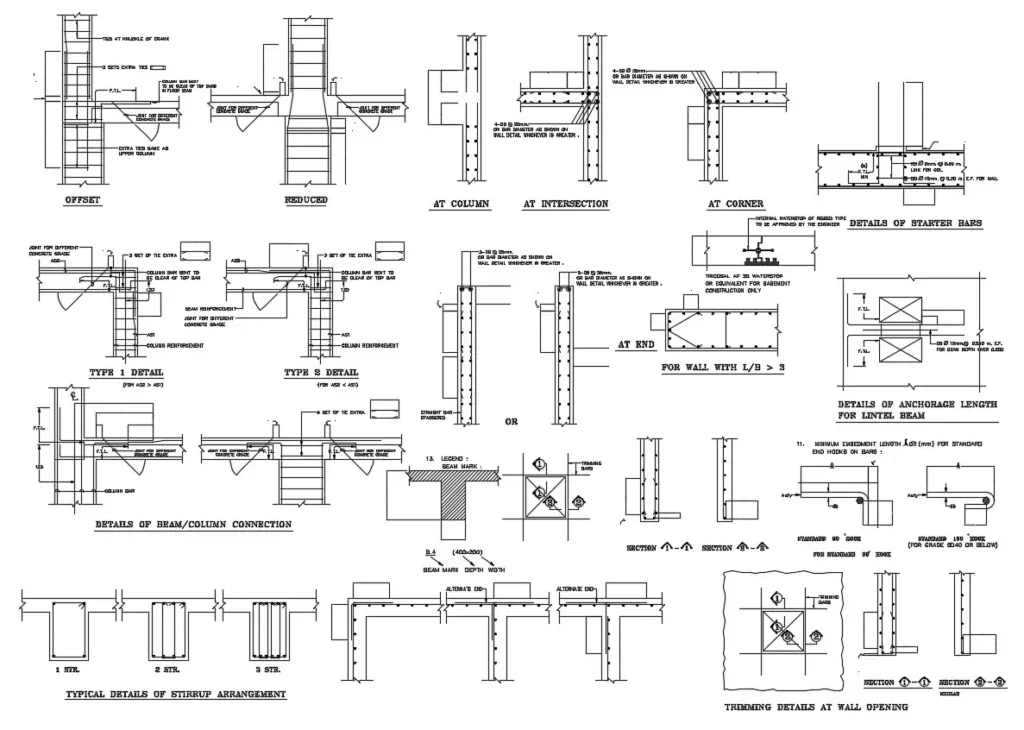
Construction Support
Vital support during the construction phase includes addressing queries, resolving issues, and overseeing the correct implementation of the design. Our engineers collaborate closely with construction teams, interpreting design specifications and contributing to the successful realization of the structure.

